How Racism Affects Our Understanding of November 22
A new take on what Secret Service agent Paul Landis saw in Dealey Plaza
David Von Pein’s JFK Channel has 48,000 subscribers on YouTube thanks to his invaluable collection of videos of the news coverage of President John F. Kennedy’s assassination. As a believer in the government’s beleaguered theory of a “magic bullet” fired by a “lone gunman,” Von Pein is well-informed and influential in many ways.
He is also profoundly ignorant in one important way.
In a recent chat group discussion among JFK researchers, Von Pein objected to the argument that Acquilla Clemons, an African-American eyewitness who disputed that Dallas police officer J.D. Tippit was shot by Lee Harvey Oswald, was treated in a racist manner.
Von Pein wrote:
Before today, I have never once heard anybody shout "It's racism!" with respect to Acquilla Clemons (or any other witness associated in any way with the JFK and Tippit murder cases.)
He added dismissively:
Am I alone here in my total ignorance regarding such alleged "racism" on the part of the DPD, FBI, WC, etc.? Because that particular allegation is totally new to me.
~big shrug~
DVP, as he is known, is not alone in his “total ignorance” of how racism has shaped our understanding of November 22, 1963. Von Pein surely knows — but seems to have forgotten — the story of Abraham Bolden, the African-American Secret Service agent who was railroaded to prison for criticizing his colleagues’ lack of professionalism while guarding JFK.
Bolden was the only member of the Secret Service to lose his job after Kennedy’s assassination. He also was the only member of the Secret Service who was black. Some people will say this is sheer coincidence. Others will conclude racism was a factor. Still others, like Von Pein, will admit they don’t know much about the role of race in the events of 1963.
Trigger warning: Some people may perceive the following statement of facts as an example of "shouting racism" without justification and may suffer hurt feelings and lowered self-esteem as a result. Proceed at your own risk.
Racism, Dallas-Style
Henry Wade, the District Attorney for Dallas in 1963, ran for his position in the 1950s by charging that his opponent was “soft on crime” because he had accepted the plea bargain of a black man convicted of murdering his wife. The killer was only sentenced to a 40-year prison sentence, whereas Wade said the man should have gone to the electric chair. This was evidently a popular message in Dallas, as Wade won the election.
All the while, the Dallas Police Department had been responsible for enforcing Jim Crow laws and employed virtually no officers of color. That the Dallas Police Department (and the FBI and Secret Service) were deeply imbued with racist and white supremacist thinking in 1963 is not doubted by any serious historian. This may be news to Von Pein. It's not news to Abraham Bolden or any black person in Dallas.
One of the reasons JFK was especially reviled in white Dallas in the fall of 1963 was his support for the Civil Rights Act, which would have banned racial segregation in public accommodations and effectively abolished Jim Crow laws. At the time, an ambitious young Republican named George H. W. Bush was running for U.S. Senate in Texas on a platform opposing the act as unconstitutional and denouncing JFK’s support for it.
Did the racism of Dallas law enforcement affect the response to Kennedy’s assassination?
The answer is yes.
Two Forgotten Eyewitnesses
Consider the well-documented story of the young black couple seated on a now-vanished park bench in Dealey Plaza. They were two prime witnesses of JFK’s murder who were never heard from.
Marilyn Sitzman, the secretary to Dallas dressmaker Abraham Zapruder, who was standing nearby, saw them.
“There was a colored couple, “ she told author Josiah Thompson in a 1966 interview. “I figure they were between 18 and 21, a boy and a girl, sitting on a bench, just almost, oh, parallel with me, on my right side, close to the fence.”
Sitzman had accompanied her boss to Dealey Plaza in downtown Dallas to see President Kennedy’s midday motorcade. They found a spot on a marble wall near the grassy embankment overlooking the motorcade route, the area now known as the grassy knoll.
Sitzman said she had first noticed the young couple 10 or 15 minutes before JFK’s arrival as she helped Zapruder climb up to his vantage point.
“Everybody was milling around down there, trying to find a place to stand and everything,” she said, “and I know when we went over to get up on the marble thing, they were already sitting there.”
“They were eating their lunch, ’cause they had little lunch sacks, and they were drinking Coke,” Sitzman recounted.
Here’s a photograph of the area Sitzman described, taken from atop “the marble thing” where she and Zapruder stood. (The park bench where the two young people sat in 1963 was removed in the 1990s.)
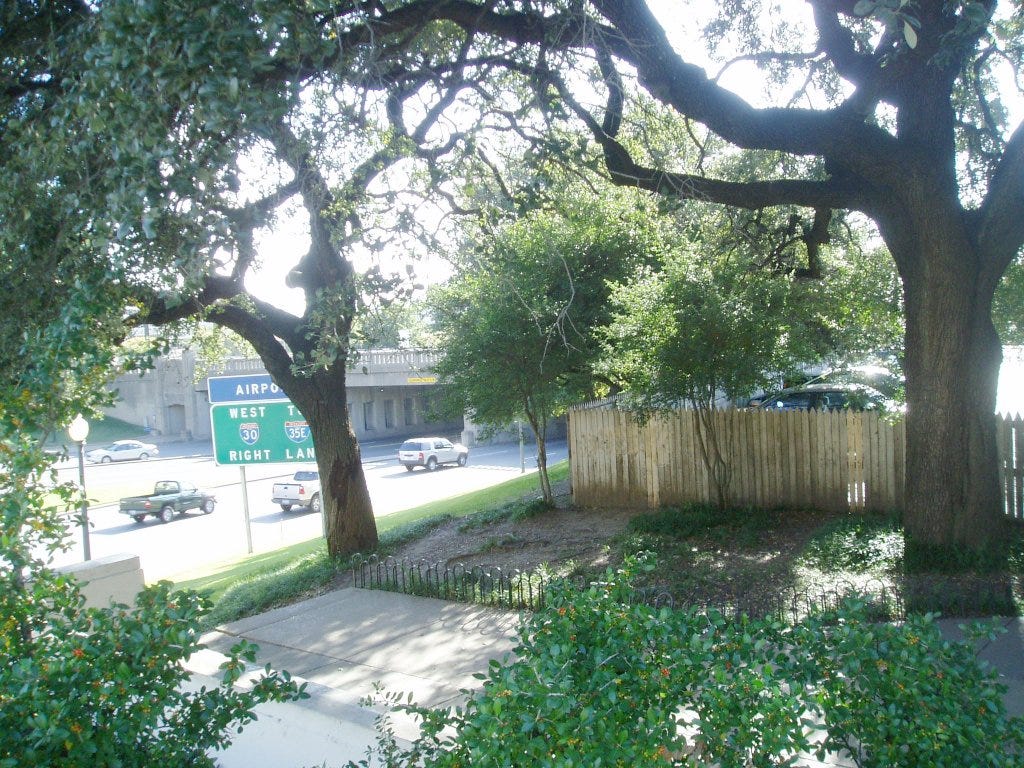
As the motorcade passed by, President Kennedy was waving to the friendly crowd when gunshots rang out. Kennedy was struck by a bullet in the back and then flung violently backward by a bullet that shattered his head above his right ear, blasting his skull open in an explosion of blood, brains, and bone.
In the ensuing chaos, Sitzman saw the black couple again.
“The main reason I remember ’em is, after the last shot I recall hearing and the [president’s] car went down under the triple underpass there, I heard a crash of glass, and I looked over there, and the kids had thrown down their Coke bottles, just threw them down and just started running towards the back, and … everybody else was running that way.”
Sitzman never saw “the kids” again — nor did anyone else. They remain unidentified to this day, 60 years later.
[I have been writing about these important JFK witnesses since 2015. See my JFK Facts piece, “Missing Witnesses: Two African Americans on the Grassy Knoll.” If you know of two black people who witnessed JFK’s assassination, please email me or send a DM. All communications will be held in confidence.]
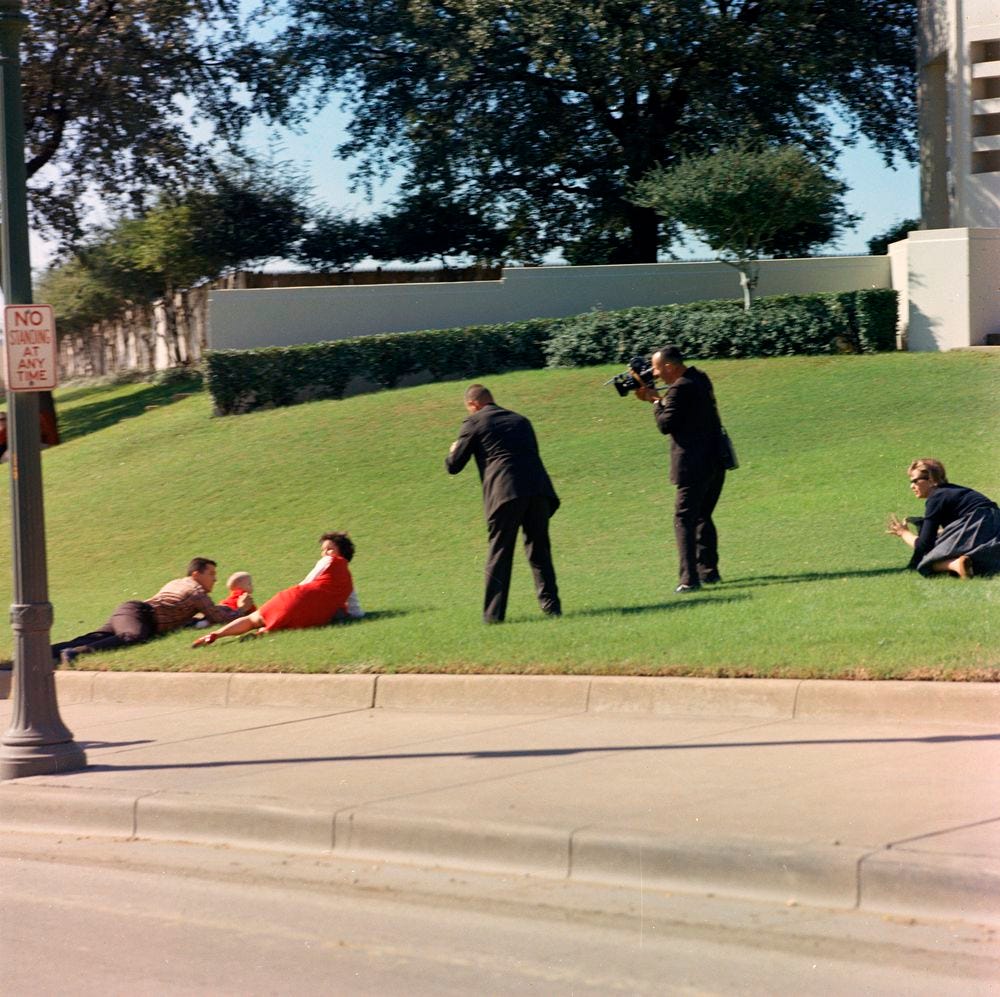
Why They Vanished
Why did these two people not come forward? They were among the closest witnesses to Kennedy’s assassination. They were in excellent position to resolve the perennial controversy about the origin of the fatal shot. They never came forward. Why?
If the accused assassin Lee Harvey Oswald truly fired three shots from a sniper's perch hundreds of feet away from the park bench where they sat, they were in a position to affirm the official theory of what happened. They did not do so.
If the official story is true, then racism obviously hurt the government’s credibility by depriving Earl Warren and Arlen Specter and Gerald Posner of compelling eyewitness testimony that would close the case forever.

If the African-American eyewitnesses sensed the fatal shot came from behind the fence 30 feet to their right, they never said so in any way that reached the public record.
Two nearby bystanders, Bill and Gayle Newman, standing about 40 feet in front of the two young black people when the gunfire erupted, thought it had come from the front of the motorcade. Newman told me in a recorded interview that he thought a shot passed “over his head,” indicating his belief that it came from the grassy knoll area where the couple sat eating their lunch.
[See. “What was going through my mind was that shot was coming right over the top of our heads,” JFK Facts, November 22, 2013.]
Dr. Robert McClelland, one of the doctors who tried to save Kennedy’s life, said that after viewing JFK’s wounds and Zapruder’s film he was “quite certain” the president was killed by a shot from the front.
Under these circumstances, one can well understand why the two forgotten witnesses did not come forward. If they had said President Lyndon B. Johnson, J. Edgar Hoover, Henry Wade, and the Dallas Police Department were wrong about the origins of the fatal shot, they would have tempted the same fate that found Abraham Bolden: legal retribution.
What Paul Landis Saw
Secret Service agent Paul Landis was in Dealey Plaza that day. His revised account of November 22 has received lots of attention from the likes of the New York Times and Jake Tapper.
But the Landis coverage has mostly omitted a telling detail of his account from the Dealey Plaza crime scene. Landis saw the same young black man who Marilyn Sitzman glimpsed fleeing the crime scene.
Here’s what he said about what he saw when JFK was killed:
"I recall a Negro male in light green slacks and beige colored shirt running across a grassy section towards some concrete steps and what appeared to be a low stone wall. He was in a bent over position."
If Oswald fired shots from several hundred feet away from the park bench where that man sat, hitting the presidential limousine which was fifty feet away, why would he run away "bent over"?
If, on the other hand, a shot came from behind the stockade fence on the grassy knoll, his posture makes more sense. He — like Bill and Gayle Newman — was trying to get below the line of fire. He was running for cover.
The couple on the knoll had a front row seat in an American nightmare, and their story has been lost to history.




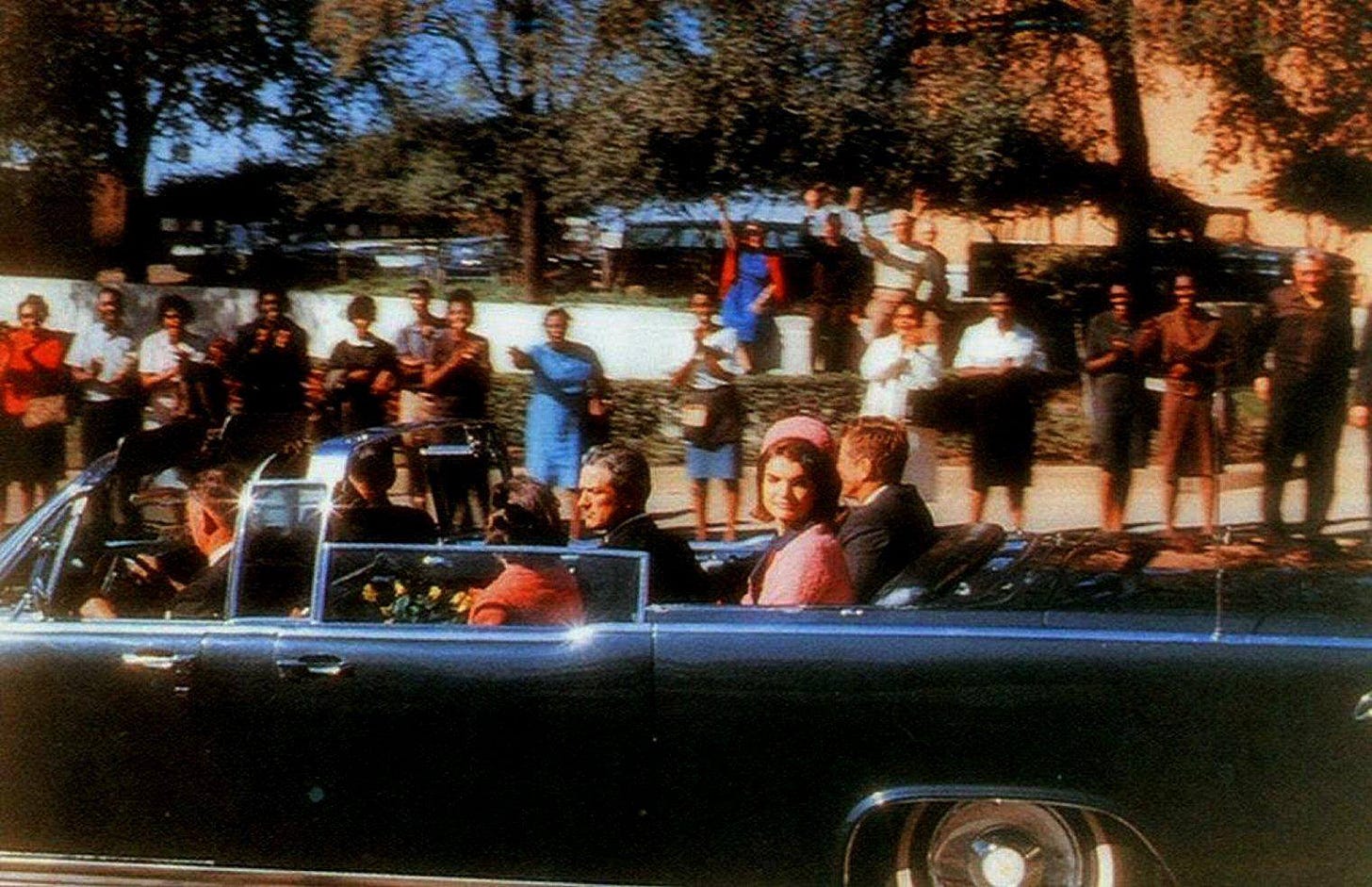
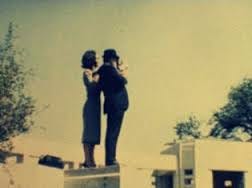


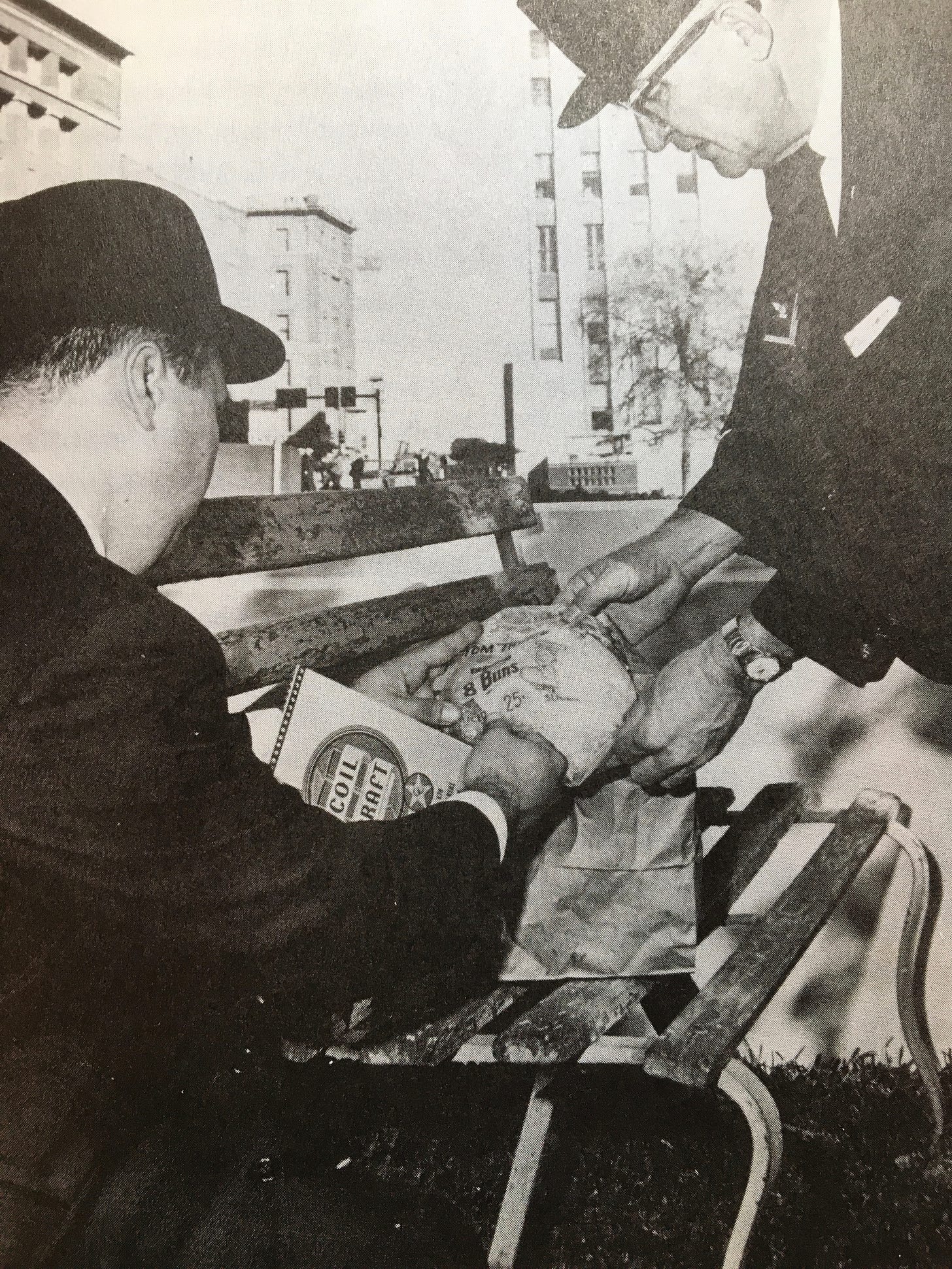
A wonderful piece.
Readers should try to imagine the mindset imposed on a host of black witnesses to events around the assassination. The statements and testimony of the three black employees on the fifth floor of the Book Depository - James "Junior" Jarman, Harold Norman and Bonnie Ray Williams - can all be seen in a different light (Landis said at one point he didn't even see anyone in the windows of the TSBD as the motorcade went by). Were these three coerced in some way? The Warren Commission liked to begin questioning black witnesses by asking them whether they'd ever been in trouble with the law. I've heard that Amos Euins, who described a gunman in a window of the TSBD, is still alive but refuses to talk to anyone.
This phenomenon even extends to law enforcement. Napoleon Daniels, the black Dallas police officer who said he saw Jack Ruby coming down the ramp into the basement of the DPD described Ruby as having a "bald patch." Ruby was wearing a hat the whole time. He could have just had a confused memory, or he could have been threatened with loss of job or worse, as happened to Abraham Bolden.
I defy anyone to read Abraham Bolden's book and then still claim there was no racism surrounding the event.